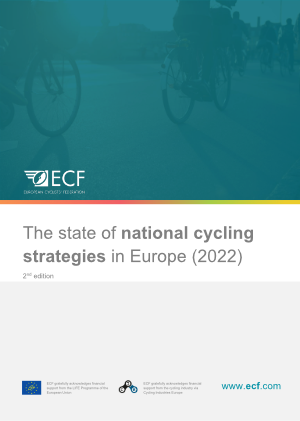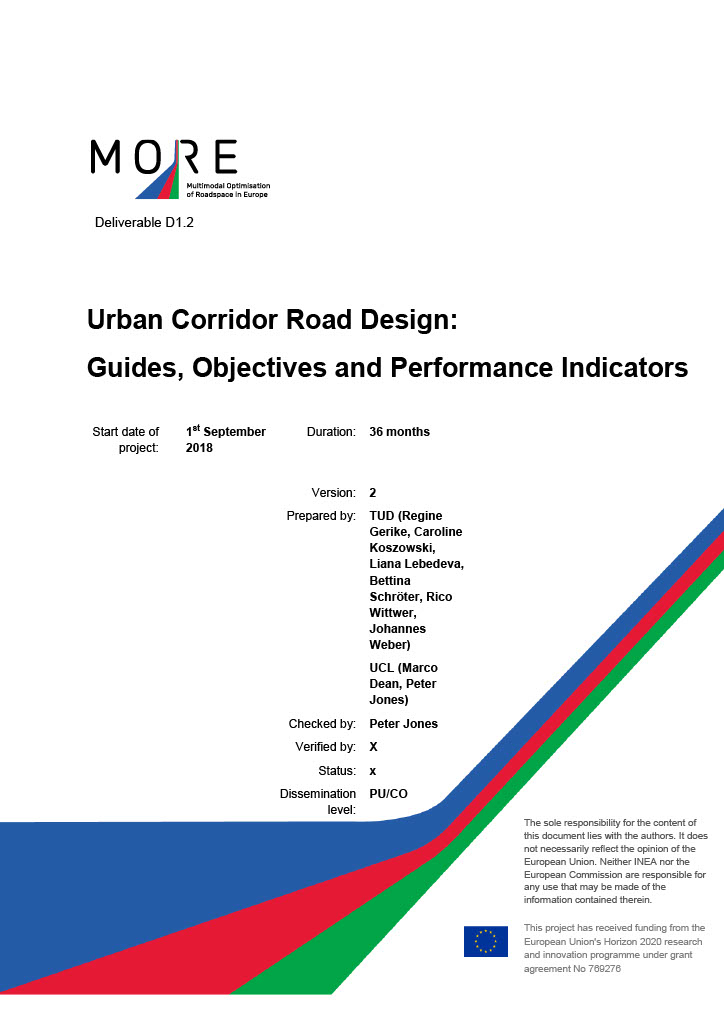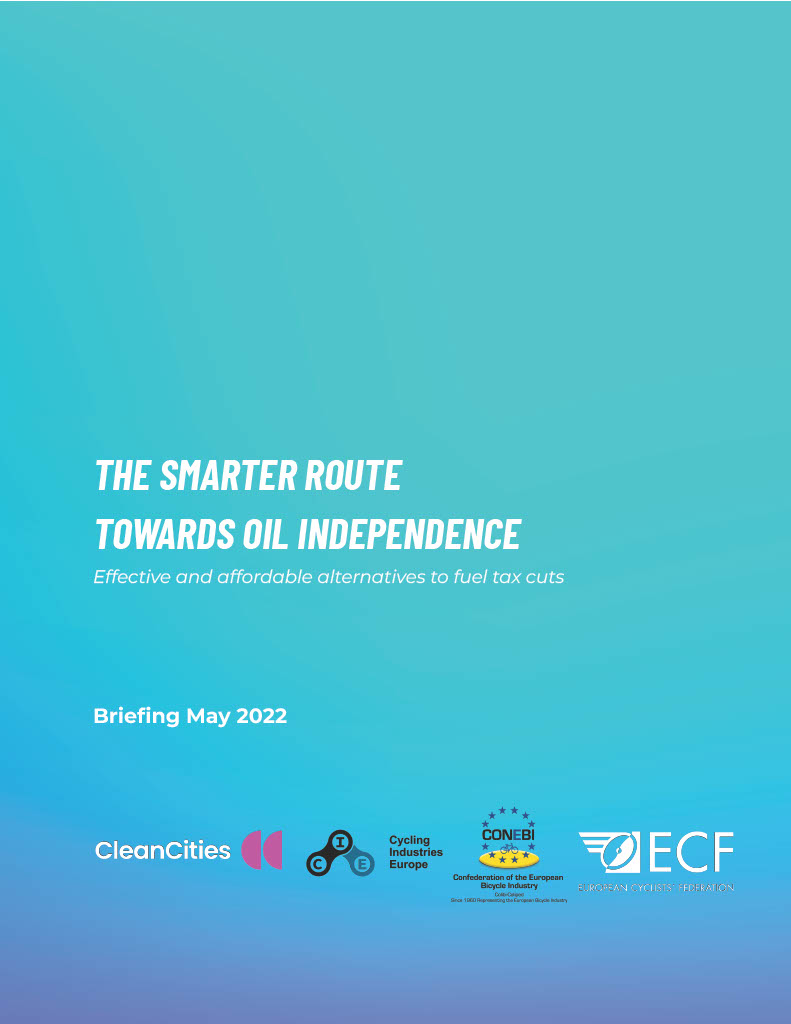In this short analysis we look on how European cities are implementing the EU Urban Mobility Framework to promote and enhance cycling for their inhabitants.
The European Commission published the new EU Urban Mobility Framework in December 2021 as a part of its “Efficient and Green Mobility package.” This included proposals to revise the Trans-European Transport Network (TEN-T) Regulation and the Intelligent Transport Systems (ITS) Directive.
But it was the new Urban Mobility Framework that really caught the attention sustainable mobility associations and experts. ECF and its cycling industry partners warmly welcomed the new framework, recognising how it elevated cycling to an entirely new level in EU policymaking, the result of many years of targeted advocacy and consistent engagement between ECF, the cycling industry and the Commission.
Two years on, the trend towards more sustainable modes of transport, including cycling, is undeniably happening across European cities. Many are eager to transform their road space and transport systems to address problems such as dirty air, congested streets, unsafe roads for pedestrians and cyclists, excessive noise, and persistent carbon emissions.
National cycling strategies are a crucial, if not indispensable instrument in developing cycling across a country. Not only in some pockets such as in progressive metropolitan cities, but also in small and medium-sized towns as well as in rural areas where cycling may not be the logical choice of many. A national cycling strategy accepts this challenge, mobilising necessary resources and aligns stakeholders to foster change to get more people cycling more often.
With the adoption of the Pan-European Master Plan for Cycling Promotion in May 2021 under the umbrella of WHO/Europe and the UN Economic Commission for Europe, 56 countries in the pan-European region are politically bound to develop and implement strategies to develop cycling at their national level by 2030. With the third edition of this report we expanded our coverage to all 54 Eurasian countries.
Developing a national cycling strategy is not a new policy instrument. The most cycling-friendly country in the world, the Netherlands, “invented” it in 1990, followed by the UK in 1996, Germany in 2002 and Czechia in 2004. With this 2023 edition, we are in a position to add four more countries to the list of countries with a current national cycling strategy: Belarus, Croatia, Hungary and Israel. Three more countries have adopted policies similar to a national cycling strategy: Ireland, Liechtenstein and Switzerland.
Even on physically segregated cycle infrastructure, cyclists still need to interact with motorised vehicles on crossings. Poorly designed crossings that are confusing, with speeding cars or insufficient visibility, might negate the safety benefits of segregation between the crossings.
The factsheet is about at-grade, uncontrolled crossings, between cycle traffic on a cycle track and lateral motorised traffic. This includes, for example, a cycle track along a major road crossing a minor arm of an X- or T-intersection, or a cycle track crossing a road in between intersections (mid-block).
Several guidelines have special requirements or separate fiches for roundabouts. As these vary greatly and are somewhat contradictory, roundabouts are not covered in this document. On-carriageway solutions (e.g. advanced stop lines, bike locks etc.) are also out of scope.
Stops and interruptions are critical quality aspects of a cycle route. On a typical bicycle, cycling stably without excessive effort requires maintaining a speed of 15 km/h or higher. The need to slow down below this speed or stop completely and put the feet on the ground is an inconvenience and reduces the efficiency and competitiveness of a cycle trip. It takes time and wastes energy. Up to 85% of the time lost by a cyclist in a built-up area is caused by traffic lights. A single stop takes up as much energy as cycling an additional 75-100 m. Frequent stops and/or long waits reduce the credibility and usability of dedicated cycling infrastructure.
Interruptions are also a safety hazard. A cyclist losing balance while slowing down or completely stopping to give right of way to another road user is one of the typical scenarios of single-vehicle crashes for older cyclists. Another study estimated that 16% of single-bicycle accidents happen while mounting or dismounting the bike. The chances of losing control at low speeds are strongly elevated among older cyclists. Women, cyclists with physical problems and inexperienced cyclists (cycling less than one day per week) have an increased likelihood of these crashes too.
This factsheet gives an overview of how different national or regional guidelines quantify this aspect of the quality of cycle routes and compares the specific thresholds used for the two most common parameters: number of interruptions per kilometre and time loss per kilometre. The final section summarises the quality requirements and provides a few recommendations on how to achieve them in urban settings.
Only several standards and guidelines have been included in this comparison, much less than in the factsheets on for example geometric design parameters. Many other documents note the need to minimise stopping and delays but do not provide any specific thresholds or even metrics that would allow us to compare different variants of a route or a solution.
Longitudinal slopes affect cycling in two ways. Uphill cycling requires additional effort, which might be discouraging or prohibitive for some users (less fit, elderly, carrying children or significant luggage, on heavy cycles etc). Downhill cycling might seem easier, but with steep gradients it can be a safety hazard, due to higher speeds and much longer braking distance (in addition to higher speeds gravity is counteracting the braking power). Overall, elevation changes increase the energy expense of cyclists, therefore reducing the comfort of use and competitiveness of the cycle route.
A short steep slope might be acceptable, especially if there is a straight flat section at the bottom of the slope that allows one to pick up speed before climbing and reduce it safely in the downhill direction. A longer climb or descent requires a gentler slope to be able to sustain the effort or manage speed. The maximum acceptable gradient depends therefore on the height difference to overcome (or the length of the slope).
This factsheet gives an overview of how different national or regional guidelines quantify this aspect of the quality of cycle routes and compares the maximum gradients allowed in the function of height difference. The final section summarises the quantifiable requirements and provides a few additional recommendations related to slopes.
This policy brief is a first-of-its-kind analysis of financial investments in cycling projects made by EU Member States using EU Structural Funds. Our analysis is based on data from the European Commission’s “Cohesion Open Data Platform”. This data set allows us to compare two EU funding periods, 2014-2020 and 2021-2027. It shows data for all 27 EU Member States at the country level (NUTS-0), plus the UK for the 2014-2020 period.
While we identify a general positive upward trend in the unlocking of EU Structural Funds for cycling, the situation is more complex when looking underneath the surface. This becomes apparent when we compare cycling investments per capita between countries, which shows that there is plenty more countries can do to take advantage of EU funds to build more cycling infrastructure and generate a greater modal shift toward cycling in their countries.
The European Cyclists’ Federation (ECF) and Cycling Industries Europe (CIE) were grateful to participate in an online consultation with European Commission DG MOVE on 3 July 2023 on the writing of the European Cycling Declaration. Announced by Executive Vice-President Frans Timmermans in March 2023 at the urging of the European Parliament, a growing coalition of EU member states and civil society organisations, the European Cycling Declaration is to be a “strategic compass” for EU action to grow cycling into a “full transport mode in its own right,” as described by Timmermans in his speech.
From the perspective of cycling, the update of the regulation on rail passengers’ rights and obligations in 2021 is worth celebrating: the new provision, as set out in Regulation (EU) 2021/7821, is a major upgrade from the old one. This policy brief outlines the key takeaways for cycling.
The lack of safe and accessible bicycle parking has been identified as one of the main barriers to regular cycling, the most-energy efficient of all transport modes. The European Cyclists’ Federation (ECF) therefore strongly welcomes the position of all three institutions with respect to bicycle parking in residential and non-residential buildings as part of the recast of the Energy Performance of Buildings Directive (EPBD). Original arguments for inclusion of bicycle parking and analysis of the current directive and its implementation can be seen here: https://www.ecf.com/what-we-do/making-buildings-fit-cycling
On 5 December 2022, the Council of the EU adopted its “general approach” for the revision of the TEN-T guidelines. On 13 April 2023, the European Parliament agreed on its proposed revision. Negotiations between the institutions soon get underway to finalise the regulation.
The European Cyclists’ Federation (ECF) welcomes many aspects of both the Council's and the Parliament's approaches and wishes to see the best of both included in the final regulation. Therefore, we have prepared this detailed comparison and set of recommendations outlining the policies which we believe would dramatically benefit cycling across the continent.
In 2022, ECF leveraged our expertise and the power of our members, networks and wider stakeholder community to deliver further progress towards our 2030 strategy.
Read ECF’s Annual Report 2022.

This report, the second of its kind, provides a comprehensive overview of the status of national cycling strategies in 44 European countries, at a time of growing political interest across the continent in cycling as a sustainable and healthy mode of transport.
With the adoption of the Pan-European Master Plan for Cycling Promotion in May 2021 under the umbrella of WHO/Europe and the UN Economic Commission for Europe, 54 countries in the pan-European region are now politically bound to develop and implement strategies to develop cycling at their national level by 2030. With data from 44 European countries, ECF’s analysis shows that most countries have a long way to go if they are to reach this objective.
The findings in this report will provide a benchmark against which ECF intends to continue publishing annual update reports to track progress on the development and implementation of national cycling strategies in Europe towards 2030.
 This deliverable is embedded in Work Package 1 (WP1) which, together with the work packages WP2 and WP3, provides the foundation for the subsequent work packages in MORE. This deliverable reviews guidelines and other relevant material for road function classification and urban street design and additionally provides a comprehensive compilation of objectives and performance indicators for the design of urban roads and streets. This deliverable is based on comprehensive research combined with intense discussions with all MORE partners.
This deliverable is embedded in Work Package 1 (WP1) which, together with the work packages WP2 and WP3, provides the foundation for the subsequent work packages in MORE. This deliverable reviews guidelines and other relevant material for road function classification and urban street design and additionally provides a comprehensive compilation of objectives and performance indicators for the design of urban roads and streets. This deliverable is based on comprehensive research combined with intense discussions with all MORE partners.
The war in Ukraine has dramatically highlighted Europe’s dependence on fossil fuel imports and has driven fuel prices to the highest level in a decade. In reaction to this price spike, many European governments adopted fuel tax cuts (price reductions at the pump) to soften the impacts on citizens. 18 out of the 27 EU governments have taken such measures, at a total cost of almost €16 billion that could rise even further if these policies are prolonged or kept permanently.
In this report, ECF and its partners take a look at more sustainable – and more logical – alternatives to fuel tax cuts.


